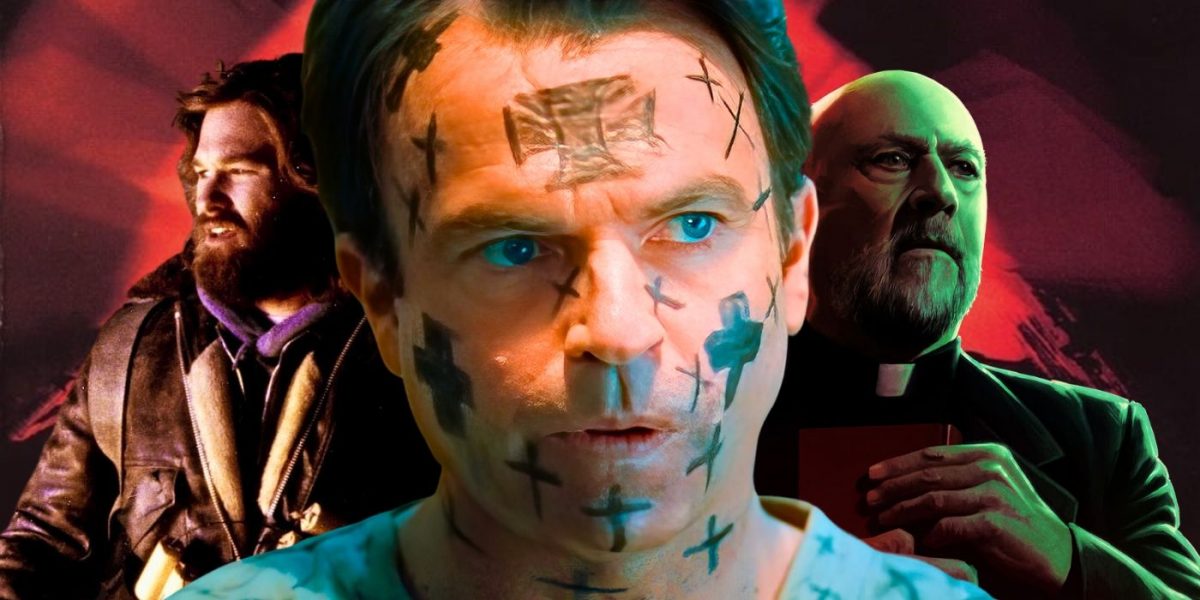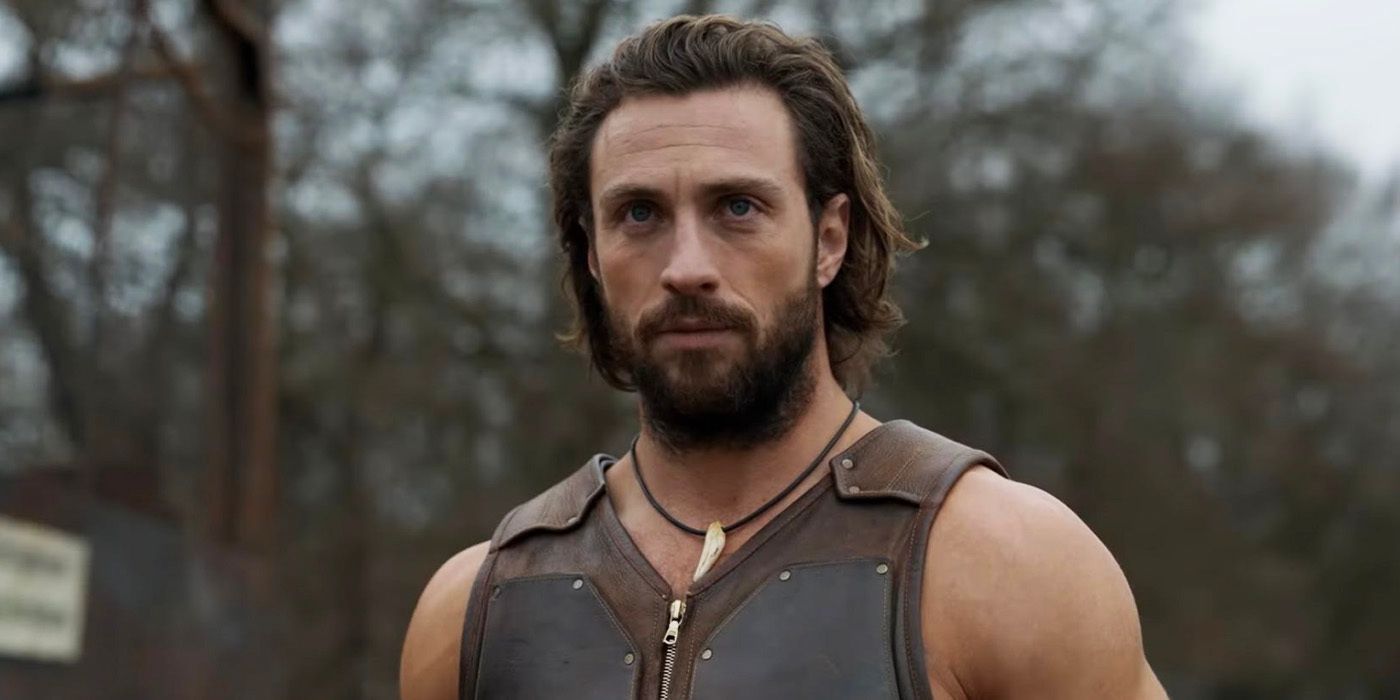
John Carpenter’s ‘Apocalypse Trilogy’ Defined Cosmic Horror
Nov 5, 2023
The Big Picture
John Carpenter’s Apocalypse Trilogy delves into cosmic horror, a subgenre that explores fears beyond human comprehension and the unknown. Each film in the trilogy explores a different aspect of our human understanding and challenges our conceptions of biology, religion, and identity. Carpenter’s films, including The Thing, Prince of Darkness, and In the Mouth of Madness, demonstrate his mastery of cosmic horror and his ability to create palpable fear through existential and metaphysical themes.
Perhaps unintentionally, John Carpenter created three of the most definitive cosmic horror films with his self-proclaimed Apocalypse Trilogy—The Thing, Prince of Darkness, and In the Mouth of Madness—from 1982 to 1994. Many filmmakers seem trepidatious to touch cosmic horror with a ten-foot pole. Cosmic horror is an expansive and highly malleable subgenre combining aesthetic and thematic elements related to science fiction and, specifically, exploring those fears that exist outside the realm of earthly human life.
Cosmic horror, also known as Lovecraftian horror, was characterized by American author H.P. Lovecraft, who identified several key qualities of the genre. The most important of which is the fear of the unknown or unknowable. To quote Lovecraft himself, cosmic horror explores the “fear and awe we feel when confronted by phenomena beyond our comprehension, whose scope extends beyond the narrow field of human affairs and boasts of cosmic significance.” Other elements include the realization that all the things that we hold significant, things that make us human, such as our morality, desires, interests, or notions of how the world is supposed to work are rendered meaningless giving way to a deep existential horror. In all three entries of the Apocalypse Trilogy, Carpenter explores a different aspect of our human conception which becomes unraveled before our protagonists’ eyes.
John Carpenter’s ‘The Thing’ Is Existential Body Horror
Image via Universal Pictures
John Carpenter’s The Thing is perhaps the most straightforward example of cosmic horror as the threat is literally alien in nature. What makes the “thing” in The Thing terrifying to this day is the idea that a creature frozen below us acts and lives in a manner that is totally antithetical to our understanding of biology. Where one “thing” ends and another begins is completely ambiguous, and it is a biological entity that acts more like a virus. As a result, it is nearly impossible to ever completely kill. The thing has no central nervous system but instead is made up of individual cells that each have a mind of their own. The fear that presents itself on the faces of MacReady (Kurt Russell) and Childs (Keith David) is palpable because their whole conception of biology and the natural world is being not only challenged but upended.
Image via Universal Pictures
John Carpenter’s Prince of Darkness contains a similar deconstruction, though the film examines the unknowable through a more spiritual lens. The movie is very much about the relationship between religion and science, how they complement each other, and how they defy each other. The threat is a combination of religious (ancient Christian) myths and a total dismantling of physics. The characters in the film are all either quantum physicists at the top of their game, philosophers of science, or clergy. They are all faced with the possibility that perhaps the spiritual and physical are not as separate as they once thought. The fact that the Catholic Church has been harboring a physical, very tangible evil for millennia causes each of the central characters to have a crisis of faith, be it their faith in science or in God. The priest in the film, who is never given a proper name but is played by the incredible Donald Pleasence, questions the validity of the institution to which he has pledged his entire life.
The scientists in the film, especially Professor Howard Birack (Victor Wong) and his group of recruited graduate students, are faced with a very real, non-theoretical threat that also goes against the preconceived notions of their chosen career path. It is mentioned early on in Prince of Darkness that Birack “wants philosophers, not scientists.” From the get-go, he challenges his students to keep open and adaptable minds when it comes to their understanding of physics, the limits of which are tested in the trippy second half of the film. Prince of Darkness then comes to a head in what can only be described as the undoing of reality. The film is predicated on ancient religious concepts coming to fruition in ways that none of the film’s theologians could predict, no matter how educated or open-minded. Like The Thing, the source of fear is once again rooted in an unknowable evil.
‘In the Mouth of Madness’ Lives Up to Its Title
Image via New Line Cinema
Each entry in John Carpenter’s Apocalypse Trilogy gets increasingly more transcendental. The threats become simultaneously more intimate and more vast with each subsequent film. As a result, In the Mouth of Madness is a perfect closing chapter to Carpenter’s exploration of cosmic horror. The film is much more concerned with perception, specifically the perception of one man: John Trent (portrayed by genre legend himself, Sam Neill). In the Mouth of Madness is, at first, more so a psychological horror film than a cosmic one. However, the lines between the supernatural, the scientific, and the personal become irretrievably blurred. The film blends religious imagery, meta storytelling, and surrealism in order to explore the depths of Trent’s psyche. How much of the film exists only in Trent’s mind and how much of it is actually happening is appropriately left up to the viewer’s interpretation.
In the Mouth of Madness qualifies as cosmic horror for a few important reasons. The first is that it, like the other two films, is very much concerned with the fear of the unknown. To once again quote Lovecraft, cosmic horror is often a “contemplation of mankind’s place in the vast, comfortless universe revealed by modern science,” and the horror springs forth from discovering the appalling truth. Lovecraft’s own work often contains characters experiencing madness. With the evolution of human psychology, the fears associated with madness and with losing one’s grip on reality were articulated in ways that didn’t previously exist. The title of the film itself is also clearly a nod to Lovecraft, hearkening to his iconic and alliteratively-titled At the Mountains of Madness. Few things are scarier than one’s own mind, and this film explores how we may be unknowable even to ourselves. Few concepts are more terrifying.
John Carpenter Mastered Cosmic Horror With the Apocalypse Trilogy
Image via Universal Pictures
The Apocalypse Trilogy is a holistic and thematically dense achievement, which as a whole is perhaps John Carpenter’s greatest. The trilogy is held together by a straightforward, yet complex concept that gives each film an identity while elevating each one when viewed as a whole. Similar to other great thematically-tied trilogies, such as Edgar Wright’s Three Flavours Cornetto Trilogy or the Three Colours Trilogy, each film can be watched individually or seen as part of a whole. There is no wrong way to watch The Thing, Prince of Darkness, or In the Mouth Madness. As a whole, the Apocalypse Trilogy expertly explores the near-universal fear of the unknown and the unknowable through the alien biology of The Thing, the intersection of physics and religion in Prince of Darkness, and In the Mouth of Madness’ exploration of the total disintegration of one’s identity. With these three classics, Carpenter proves he is truly the master of horror.
Publisher: Source link
I’m Pretty Much The Dumbest Guy On Earth So These 22 Absolutely Incredible Pictures Put My Brain In A Blender Immediately After I Saw Them
I'm Pretty Much The Dumbest Guy On Earth So These 22 Absolutely Incredible Pictures Put My Brain In A Blender Immediately After I Saw Them 1. This is what Nicolas Cages' father, August Coppola, looked like: 2. This is how…
Apr 28, 2024
Reese Witherspoon & Daughter Ava’s Resemblance Is Wild in Twinning Pic
Reese Witherspoon Hit the 2024 Golden Globes Red Carpet with a Special Date: her eldest son Deacon PhillippeReese Witherspoon and Ava Philippe walk the line of being impossible to tell apart. In fact, the Legally Blonde star and her 24-year-old…
Apr 28, 2024
RuPaul’s Drag Race All Stars 9 Reveals Cast And New Twist
RuPaul's Drag Race All Stars 9 Reveals Cast And New Twist The RuPaul's Drag Race TV universe stops for no one. Just last week, Nymphia Wind was crowned the winner of Season 16. And days later, Drag Race has announced…
Apr 27, 2024
See What Gifts Beyoncé Sent a 2-Year-Old Fan After Viral TikTok
Tyler Fabregas is surrounded by Beyoncé's sweet embrace. After the 2-year-old went viral for calling the Grammy winner his friend, she proved the feelings were mutual by sending him and his family a loving care package. Alongside a photo of…
Apr 27, 2024











